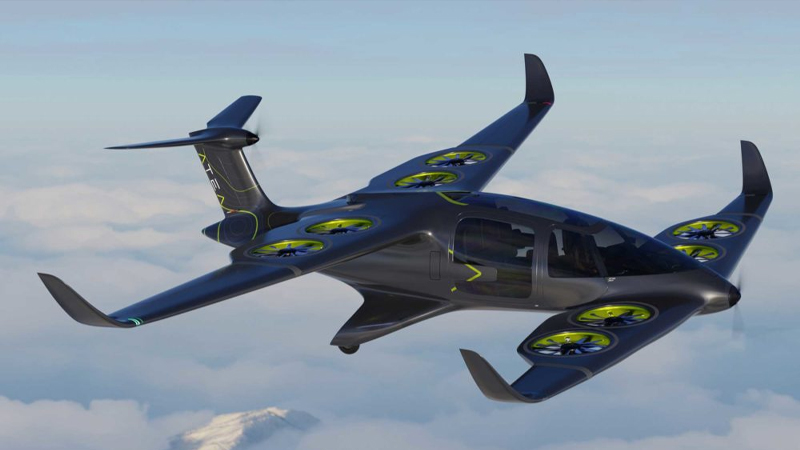

Earlier this month, we posted an article highlighting the potential of hybrid VTOLs as a bridge between current and future technologies. Rather than being the long-term solution for sustainable transport, they are an option for maximising what we currently have available.
As a follow-up, let us look at some of the different applications for fixed-wing hybrid VTOLs, which are arguably the epitome of current technology.
First on our list is Ascendance Flight Technologies, a French company currently working on a five-seat hybrid VTOL air taxi. The company’s goal is to accelerate the transition towards greener aircraft through hybrid models. As we discussed in our previous post, this is the exact purpose of hybrid engine technology.
Its VTOL (called Atea) has eight propellers embedded in its wings and two propellers for horizontal flight. It uses electrical power for vertical take off and then jet fuel for forward flight. The fuel engines can be adapted to sustainable aviation fuel, biofuel and, eventually, hydrogen fuel cells. While it currently uses a less sustainable fuel, it is designed to be futureproof in this regard.
The hybrid engine promises to reduce carbon emissions by up to 80 per cent, and the embedded fans are four times quieter than competing models. Combine this with the VTOL’s range of more than 400 kilometres and a mere ten-minute turnaround time, and it has plenty to offer the air taxi market.
Tackling the security market is Commaris’ The Seeker, a fixed-wing composite material drone capable of carrying payloads of up to ten pounds. Its payload is fully customisable and can hold anything ranging from a high-resolution camera, LIDAR sensor, and methane detector. Commaris plan to market it to businesses focused on security and monitoring, particularly in noise-sensitive environments.
Slovenia-based ElevonX plans to break into the same market with its fixed-wing hybrid UAV. Like The Seeker, it can be fully automated and caters to a range of monitoring solutions. It also uses composite materials to strike the right balance between durability and weight.
Both fixed-wing drones rely on similar technology, including lithium-ion batteries and charging capabilities. Compared to rotary drones, they are better suited to long operations, as their fixed-wing design makes them more efficient over longer distances. Most rotary drones are better suited to short-range flights that require manoeuvrability, which is less often a requirement on long flights.
The purpose of hybrid VTOLs is accurately summarised by Ascendance’s mission statement: to bridge the gap between current and more sustainable technology. As such, we will likely see hybrid VTOLs make it to the market sooner than their fully-electric competitors. The technology already exists, and, as a result, there are fewer hurdles regarding certification.
Are they the future, though? It is unlikely. Our previous article used the analogy of hybrid cars, and we can once again call on this to explain why. Hybrid cars helped us design and adapt electric technology, understand its limits, and soften the public’s transition. Hybrid VTOLs will do the same, and fixed-wing models have their part to play in this, too.